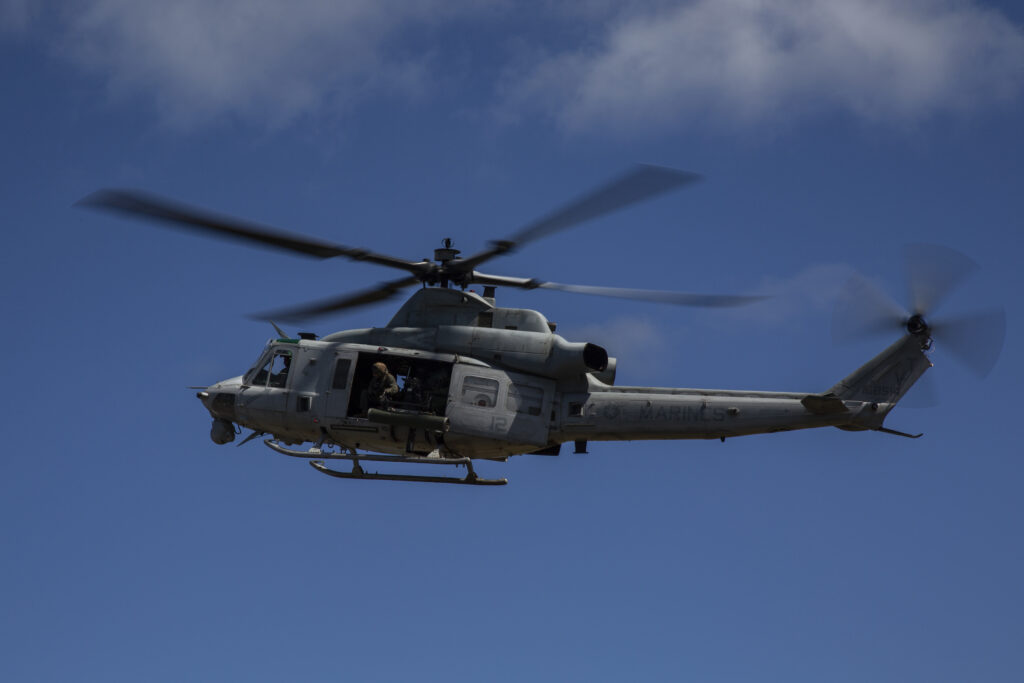
ARLINGTON, Va. — The U.S. Marine Corps’ plan to develop future replacements for its rotary wing aircraft is evolving to a concept called VTOL FOS, or vertical takeoff and landing family of systems, a senior Corps aviation official said.
Brig. Gen. Matthew Mowery, assistant deputy commandant for aviation, speaking Feb. 9 at the National Defense Industrial Association’s Expeditionary Warfare Conference, said the Corps’ plans to replace its AH-1Z and UH-1Y helicopters in the future has evolved over several iterations over the past few years, especially as Commandant Gen. David Berger’s Force Design 2030 was introduced.
Mowery said the initial effort was centered on involvement in the Army’s Future Vertical Lift program, specifically its Capability Set 3. As the various services branched out, the Marine Corps’ effort became the Attack-Utility Replacement Aircraft, or AURA.
Mowery said the Corps “started thinking differently” about the AURA with the emergence of Force Design 2030, and now has folded AURA into the VTOL FOS. The data generated from the Marine Corps’ Future Vertical Lift analysis of alternatives, which concluded in 2019, laid the groundwork for analysis and to develop the capability development document. The Marine Corps issued a request for information in September 2019 and a “broad agency announcement for the introduction of advanced technologies in model-based systems engineering and condition-based maintenance in 2020,” the Corps said in information provided to Seapower.
The VTOL FOS program “will develop a weapon system or systems that fills capability and performance gaps identified by the Marine Corps,” the Corps told Seapower in November 2021. “The VTOL family of systems will be designed for optimal manning and for manned-unmanned teaming with the MAGTF [Marine Air-Ground Task Force] Unmanned Aircraft System Expeditionary capability. Additionally, it will include a common mission system architecture to enable interoperability across the MAGTF. The Marine Corps’ driving requirement is attached escort in tomorrow’s battlespace during distributed expeditionary operations from the sea. Speed, maneuver envelope, all-weather capability and survivability will facilitate full integration of this aircraft into the MAGTF. To meet these goals, the VTOL family of systems will operate above legacy helicopter performance attributes like airspeeds, combat range, altitude and endurance with a full payload.
“The VTOL family of systems program will require a comparable mission radius and loiter time to match MV-22Bs, as well as time on station to support distributed air combat element operations,” the Corps said. “The VTOL family of systems will have a greater capability to employ a more diverse set of weapon systems and operate in a larger spectrum of environments by using fused, onboard sensor data and terrain avoidance systems. Amphibious operations and shipboard compatibility will be a key attribute to this air vehicle.”






